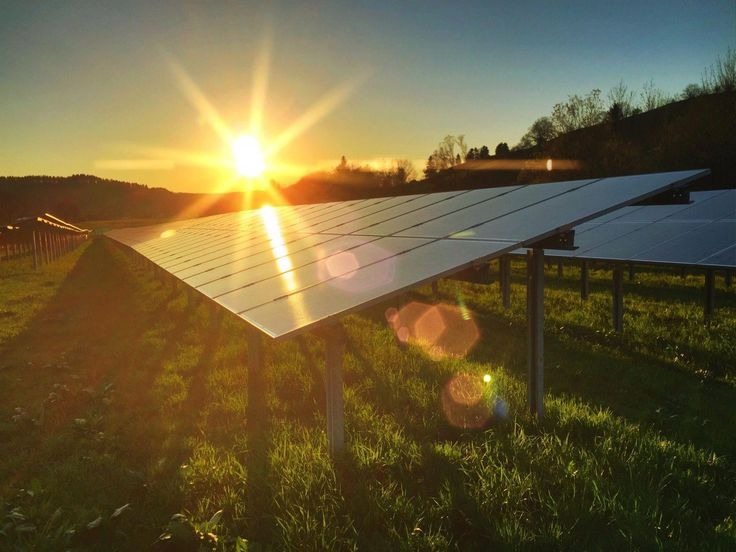Unveiling Solar Panel Efficiency and Performance: A Closer Look
In the quest for sustainable energy solutions, solar panels have emerged as a cornerstone technology, harnessing the sun's abundant energy to power homes, businesses, and communities. Central to their effectiveness are factors like efficiency and working quality, which determine how effectively solar panels convert sunlight into usable electricity. Let's delve into what makes solar panels efficient, how their quality affects performance, and why these factors are crucial for maximizing the benefits of solar energy.

Understanding Solar Panel Efficiency
Solar panel efficiency refers to the percentage of sunlight that a panel can convert into electricity under ideal conditions. Higher efficiency panels produce more electricity for a given area of solar panels, making them more cost-effective over their lifespan. Several key factors influence solar panel efficiency
1. PV Cell TechnologyThe efficiency of solar panels largely depends on the type of photovoltaic (PV) cell technology used. Monocrystalline silicon cells typically offer higher efficiency rates (often around 15-22%) compared to polycrystalline silicon cells (12-18%) and thin-film technologies (7-13%). Advances in PV cell design, such as PERC (Passivated Emitter Rear Cell) and bifacial cells, have further improved efficiency levels.
2.Panel Design and ManufacturingThe design and manufacturing processes of solar panels play a crucial role in their efficiency. Factors such as the quality of materials, precision in assembly, and anti-reflective coatings can enhance light absorption and minimize energy loss, thereby increasing overall efficiency.
Solar panel efficiency can decrease as temperatures rise. The temperature coefficient of a panel measures how much its efficiency drops as temperatures increase. Panels with lower temperature coefficients perform better in hot climates, maintaining higher efficiency levels when exposed to sunlight.
Quality and Performance Considerations
Beyond efficiency, the quality of solar panels influences their long-term performance and reliability:
1. Durability and LongevityHigh-quality solar panels are designed to withstand environmental factors such as wind, rain, snow, and hail. They are constructed using durable materials and undergo rigorous testing to ensure longevity and performance over their 25 to 30-year lifespan.
2. Degradation RateSolar panels experience a gradual decrease in performance over time due to factors like exposure to sunlight, temperature variations, and environmental stresses. The degradation rate measures how much the panel's efficiency decreases annually. High-quality panels often have lower degradation rates, maintaining higher performance levels over their operational lifespan.
3. Warranty and CertificationsReputable solar panel manufacturers offer warranties that guarantee performance and product reliability. Certifications such as IEC (International Electrotechnical Commission) standards and UL (Underwriters Laboratories) certifications ensure that panels meet international quality and safety standards.
Working Quality and Real-World Performance
In real-world applications, the working quality of solar panels encompasses their ability to consistently generate electricity under varying environmental conditions
1. Performance in Different ClimatesSolar panels are designed to operate effectively in a wide range of climates, from sunny deserts to cloudy regions. Understanding a panel's performance under different weather conditions, including low-light and overcast days, is essential for accurately estimating energy production and optimizing system design.
2. Optimization and MonitoringMaximizing solar panel efficiency requires careful system design, including panel orientation, tilt angle, and shading analysis. Advanced monitoring systems allow homeowners and installers to track energy production in real-time, identify potential issues, and optimize performance over time.
2. Maintenance and CareRegular maintenance, such as cleaning panels to remove dirt and debris, is crucial for optimizing energy production. Monitoring for potential shading from nearby trees or buildings and addressing any equipment malfunctions promptly can also improve working quality and ensure consistent performance.
The Future of Solar Panel Efficiency
As solar technology continues to evolve, ongoing research and development are focused on enhancing efficiency, durability, and cost-effectiveness:
1. Next-Generation PV TechnologiesEmerging PV technologies, such as perovskite solar cells and tandem solar cells, hold promise for achieving higher efficiency levels and reducing manufacturing costs.
2. Integrated Systems and Energy StorageIntegration with energy storage solutions, such as batteries, enables solar panels to store excess electricity for use during periods of low sunlight or high demand. This integration enhances system reliability and maximizes energy utilization.
3. Smart Grid IntegrationAdvances in smart grid technologies allow solar panels to interact more intelligently with the electrical grid, optimizing energy distribution, and enhancing grid stability.
In conclusion, solar panel efficiency and working quality are pivotal factors in maximizing the benefits of solar energy. By understanding these concepts and investing in high-quality, efficient solar panels, individuals, businesses, and governments can harness clean, renewable energy effectively, reduce environmental impact, and build a sustainable energy future for generations to come. As technology advances and adoption grows, the potential of solar energy to meet global energy demands while mitigating climate change continues to expand, making solar panels a cornerstone of modern energy solutions.